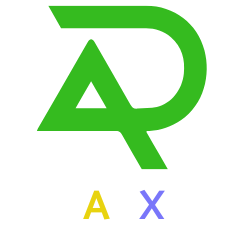Introduction to Google FLoC and Privacy Sandbox
Google’s FLoC (Federated Learning of Cohorts) is a groundbreaking initiative within the Privacy Sandbox, aimed at transforming how advertisers target users while enhancing privacy. As third-party cookies face obsolescence, FLoC offers a new method for advertisers to reach audiences based on shared interests rather than individual tracking.
What is Google FLoC?
The Concept Behind FLoC
FLoC operates by grouping users into cohorts based on their browsing habits. Instead of tracking individual users, it analyzes collective behavior, allowing advertisers to target groups with similar interests. This approach preserves user privacy while still enabling effective advertising strategies.
The Role of Privacy Sandbox
The Privacy Sandbox is Google’s broader initiative to create a more secure and private web environment. It aims to replace third-party cookies with technologies that protect user data while still facilitating relevant advertising. FLoC is one of several proposals under this umbrella, designed to maintain the viability of digital advertising without compromising user privacy.
How FLoC Works for Publishers
Benefits of Using FLoC
For publishers, FLoC presents several advantages:
- Enhanced Privacy: By using cohort-based targeting, publishers can respect user privacy while still delivering relevant ads.
- Increased Revenue Potential: With effective targeting through cohorts, publishers can potentially increase their ad revenue as advertisers seek to reach specific interest groups without invasive tracking.
- Simplified Compliance: As privacy regulations tighten globally, FLoC helps publishers comply with laws like GDPR and CCPA by minimizing personal data usage.
Implementation Strategies for Publishers
To effectively implement FLoC, publishers should consider the following strategies:
- Stay Informed: Keep up with updates from Google regarding the Privacy Sandbox and FLoC developments.
- Engage with the Community: Participate in discussions and feedback loops to influence the evolution of these technologies.
- Experiment with Cohorts: Begin testing cohort-based targeting methods to understand how they can fit into existing ad strategies.
Challenges and Considerations
Potential Drawbacks of FLoC
While FLoC offers promising solutions, there are challenges that publishers must navigate:
- Adoption Rates: The success of FLoC depends on widespread adoption among browsers and advertisers.
- Effectiveness of Cohort Targeting: There may be questions about how effectively cohorts can reach intended audiences compared to traditional methods.
- User Perception: Educating users about how their data is being used in a privacy-focused manner is crucial for acceptance.
Future of FLoC and Privacy Sandbox
As Google continues to refine its Privacy Sandbox initiatives, including the potential transition from FLoC to alternatives like the Topics API, publishers must remain agile. The Topics API shifts focus from cohorts to broader categories based on user interests, which may present new opportunities and challenges for targeted advertising.
Embracing Change in Digital Advertising
Google’s FLoC represents a significant shift in how digital advertising will function in a post-cookie world. By understanding and adapting to these changes, publishers can not only protect user privacy but also unlock new revenue streams. Engaging proactively with these developments will be essential for maintaining competitiveness in the evolving landscape of online advertising. This guide provides a comprehensive overview of Google FLoC and its implications for publishers within the framework of the Privacy Sandbox. By focusing on privacy-centric solutions, publishers can navigate the future of digital advertising effectively.

